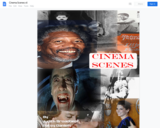
a textbook on the history of film
- Subject:
- Arts and Humanities
- Material Type:
- Textbook
- Author:
- Patsy daniels
- colleenn mccready
- laura sherrill
- stuart lenig
- judith broadbent
- Date Added:
- 06/13/2022

a textbook on the history of film

This resources is a listing of materials that may potentially be used within a variety of lessons related to The Cold War

Conversations host Harry Kreisler welcomes Harper's Editor Emeritus Lewis Lapham for a discussion of his career and the history of Harper's Magazine. Lapham compares print to electronic media, analyzes the corruption of language by politics, and reflects on the incompatibility of democracy and empire. He concludes with a devastating critique of the Bush administration and its impeachable offenses. (59 min)
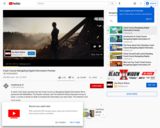
In which John Green previews the new Crash Course on Navigating Digital Information! We've partnered with MediaWise, The Poynter Institute, and The Stanford History Education Group to teach a course in hands-on skills to evaluate the information you read online. The internet is full of information, a lot of it notably wrong. We're here to arm you with the skills to separate the good stuff from the inaccurate stuff and browse the internet with confidence.
Special thanks to our partners from MediaWise who helped create this series:
The Poynter Institute
The Stanford History Education Group (sheg.stanford.edu)

This article introduces a free online collection of images, video clips, and animations that teachers can use in creating resources for use with students. The four steps in creating a video clip, an animation, or other resource are presented.

This course is an intermediate subject designed to help students gradually build an in-depth understanding of France. The course focuses on French attitudes and values regarding education, work, family and institutions, and deals with the differing notions that underlie interpersonal interactions and communication styles, such as politeness, friendship and formality. Using a Web comparative, cross-cultural approach, students explore a variety of French and American materials, then analyze and compare them using questionnaires, opinion polls, news reports (in different media), as well as a variety of historical, anthropological and literary texts. Throughout the course, attention is given to the development of relevant linguistics skills. This course is recommended for students planning to study and work in France and is taught in French.

This course examines cultural performances of Asia, including both traditional and contemporary forms, in a variety of genres. Students will explore the communicative power of performances with attention to the ways performers, media, cultural settings, and audiences interact. The representation of cultural difference is considered and how it is altered through processes of globalization. Performances are viewed live when possible, but the course also relies on video, audio, and online materials as necessary. There are no prerequisites for this course and it is taught in English.

This course explores the reciprocal relationships among design, science, and technology by covering a wide range of topics including industrial design, architecture, visualization and perception, design computation, material ecology, and environmental design and sustainability. Students will examine how transformations in science and technology have influenced design thinking and vice versa, as well as develop methodologies for design research and collaborate on design solutions to interdisciplinary problems.
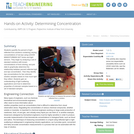
Students quantify the percent of light reflected from solutions containing varying concentrations of red dye using LEGO© MINDSTORMS© NXT bricks and light sensors. They begin by analyzing a set of standard solutions with known concentrations of food coloring, and plot data to graphically determine the relationship between percent reflected light and dye concentration. Then they identify dye concentrations for two unknown solution samples based on how much light they reflect. Students gain an understanding of light scattering applications and how to determine properties of unknown samples based on a set of standard samples.
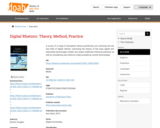
A survey of a range of disciplines whose practitioners are venturing into the new field of digital rhetoric, examining the history of the ways digital and networked technologies inhabit and shape traditional rhetorical practices as well as considering new rhetorics made possible by current technologies
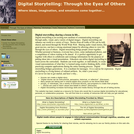
This website on digital storytelling has been created as a resource for those who would like to pursue digital storytelling for educational, personal, or collaborative purposes. You will find links to a variety of resources that will help you get started.
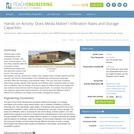
Students gain a basic understanding of the properties of media soil, sand, compost, gravel and how these materials affect the movement of water (infiltration/percolation) into and below the surface of the ground. They learn about permeability, porosity, particle size, surface area, capillary action, storage capacity and field capacity, and how the characteristics of the materials that compose the media layer ultimately affect the recharging of groundwater tables. They test each type of material, determining storage capacity, field capacity and infiltration rates, seeing the effect of media size on infiltration rate and storage. Then teams apply the testing results to the design their own material mixes that best meet the design requirements. To conclude, they talk about how engineers apply what students learned in the activity about the infiltration rates of different soil materials to the design of stormwater management systems.

In the Information Age, media is everywhere. This course will help you make sense of it all, providing insight into the structure of media firms, the nature of their products and how they make money. Is media biased? Is consolidation of media companies bad for consumers? This course will address those questions as well as how the government affects the structure of media through policies such as net neutrality, copyright, TV regulation, and spectrum allocation. This course will provide a general background on the research from economists on media and journalism. There will be a lot of economics and not too much math.
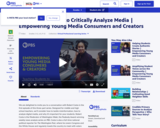
Designed for middle and high school teachers, we’ll consider how to tackle misinformation, how to analyze digital media, and why it’s important for your students. Robert Costa is the Moderator of Washington Week, the Peabody Award-winning weekly news analysis series on PBS. Costa is also a full-time national political reporter for The Washington Post, where he covers Congress and the White House and regularly travels the country to meet with voters and elected officials.
Led by PBS Digital Innovator All Star Leigh Herman and PBS Station Representative Mary Anne Lane this session highlights exciting resources and models that you can immediately implement in your classroom.
Prioritizing fun, engaging and accessible tools for your students, the series will highlight techniques for analyzing media, and amplifying student voice through authentic storytelling.

The 12th grade learning experience consists of 7 mostly month-long units aligned to the Common Core State Standards, with available course material for teachers and students easily accessible online. Over the course of the year there is a steady progression in text complexity levels, sophistication of writing tasks, speaking and listening activities, and increased opportunities for independent and collaborative work. Rubrics and student models accompany many writing assignments.Throughout the 12th grade year, in addition to the Common Read texts that the whole class reads together, students each select an Independent Reading book and engage with peers in group Book Talks. Language study is embedded in every 12th grade unit as students use annotation to closely review aspects of each text. Teacher resources provide additional materials to support each unit.

This project unit—a multimedia self-portrait published in digital form—is the capstone of your students' high school careers. It is a chance for them to pause and reflect on where they've been, where they're going, and who they are as a person. Students will reflect on what they want others to know about them: what they want their message to be and what types of media they might use to convey that message. Students will have the opportunity to express themselves in many different formats—through writing, of course, but also through other media of their choosing. Students will be able to convey your message through visual art, photography, a graphic novel, audio, poetry, or video—practically any type of media they want!
ACCOMPLISHMENTS
Students will complete a multimedia self-portrait, capturing important aspects of the essence of themselves.
Students will contribute one chapter from their multimedia self-portrait to a class anthology.
Students will present one chapter from their multimedia self-portrait to the class.
GUIDING QUESTIONS
These questions are a guide to stimulate thinking, discussion, and writing on the themes and ideas in the unit. For complete and thoughtful answers and for meaningful discussions, students must use evidence based on careful reading of the texts.
How is late adolescence a moment of internal and external change?
What are the most important qualities of your character—past, present, and future?
How can you portray these key aspects of yourself using multimedia?
BENCHMARK ASSESSMENT: Cold Read
During this unit, on a day of your choosing, we recommend you administer a Cold Read to assess students’ reading comprehension. For this assessment, students read a text they have never seen before and then respond to multiple-choice and constructed-response questions. The assessment is not included in this course materials.

What are your students’ strongest personal character strengths at this point in their lives? As students mine the interviews they conducted, they’ll look for character strengths others see in them. Do they see these strengths in themselves? Are they qualities that your students want to portray in their self-portrait?
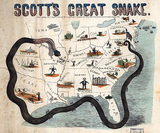
In this lesson, students will study some grammatical principles about how Swift crafted “A Modest Proposal.”

In our lives, we are constantly telling stories to ourselves and to others in an attempt to both understand our experiences and present our best selves to others. But how do we tell a story about ourselves that is both true and positive? How do we hold ourselves up in the best possible light, while still being honest about our struggles and our flaws? Students will explore ways of interpreting and portraying personal experiences. They'll read Chinua Achebe's novel Things Fall Apart , analyzing the text through the eyes of one character. They'll get to know that character's flaws and strengths, and they'll tell part of the story from that character's perspective, doing their best to tell an honest tale that presents their character's best side. Then they'll explore their own stories, crafting a personal narrative about an important moment of learning in his or her life.
ACCOMPLISHMENTS
Students read and analyze Chinua Achebe’s Things Fall Apart , viewing the events and conflicts of the novel through the eyes of one of the central characters.
Students write a two-part narrative project: one narrative told through their character’s perspective and one personal narrative about an incident in their own life.
GUIDING QUESTIONS
These questions are a guide to stimulate thinking, discussion, and writing on the themes and ideas in the unit. For complete and thoughtful answers and for meaningful discussions, students must use evidence based on careful reading of the texts.
How do our conflicts shape and show our character?
How can we tell a story about ourselves that’s both honest and positive?
How do definitions of justice change depending on the culture you live in?
What are ways individuals can react to a changing world? To a community that doesn’t accept us?
BENCHMARK ASSESSMENT: Cold Read
During this unit, on a day of your choosing, we recommend you administer a Cold Read to assess students’ reading comprehension. For this assessment, students read a text they have never seen before and then respond to multiple-choice and constructed-response questions. The assessment is not included in this course materials.
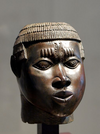
In this lesson, students will work to finish the revision of their personal narrative.